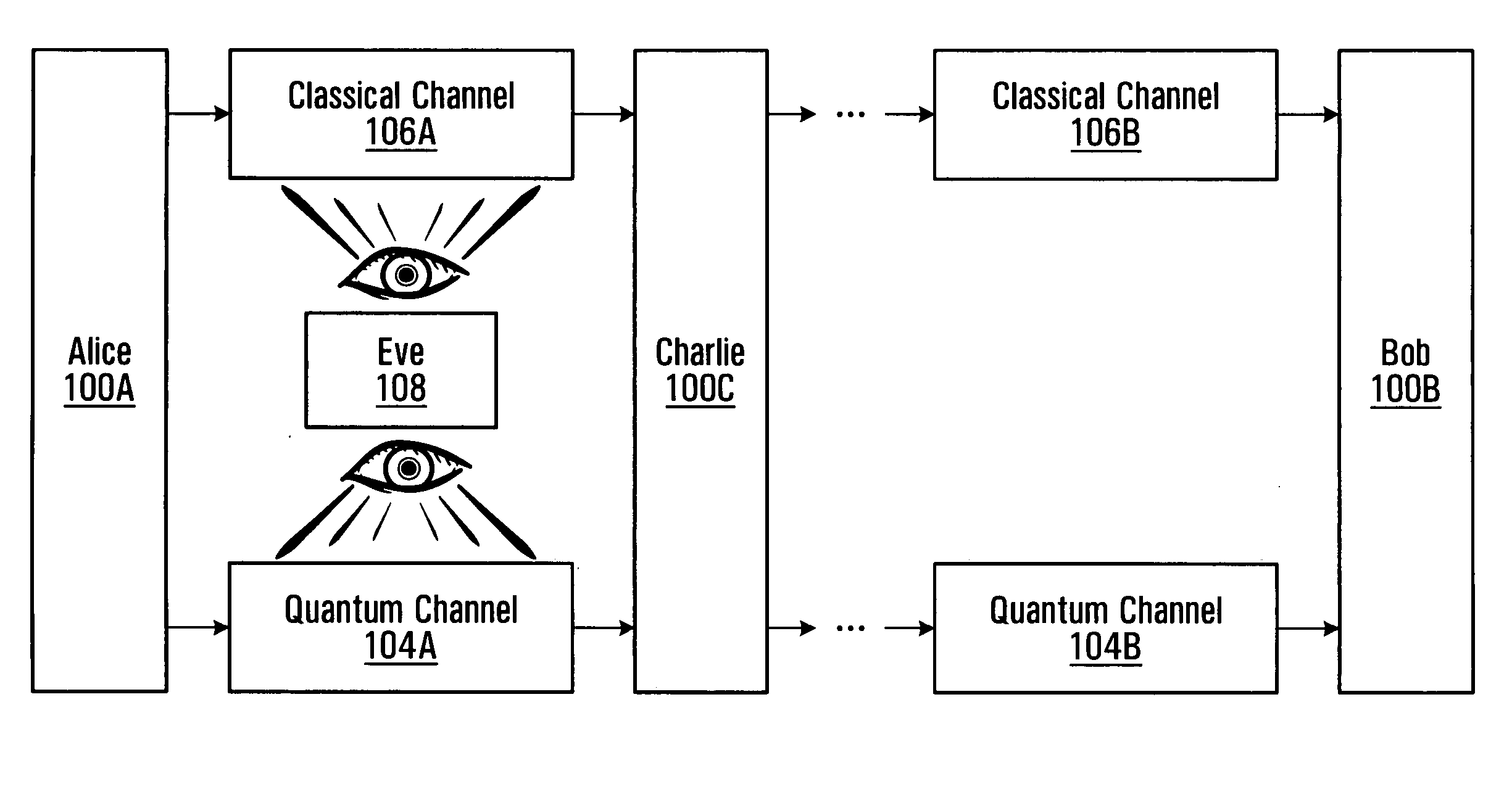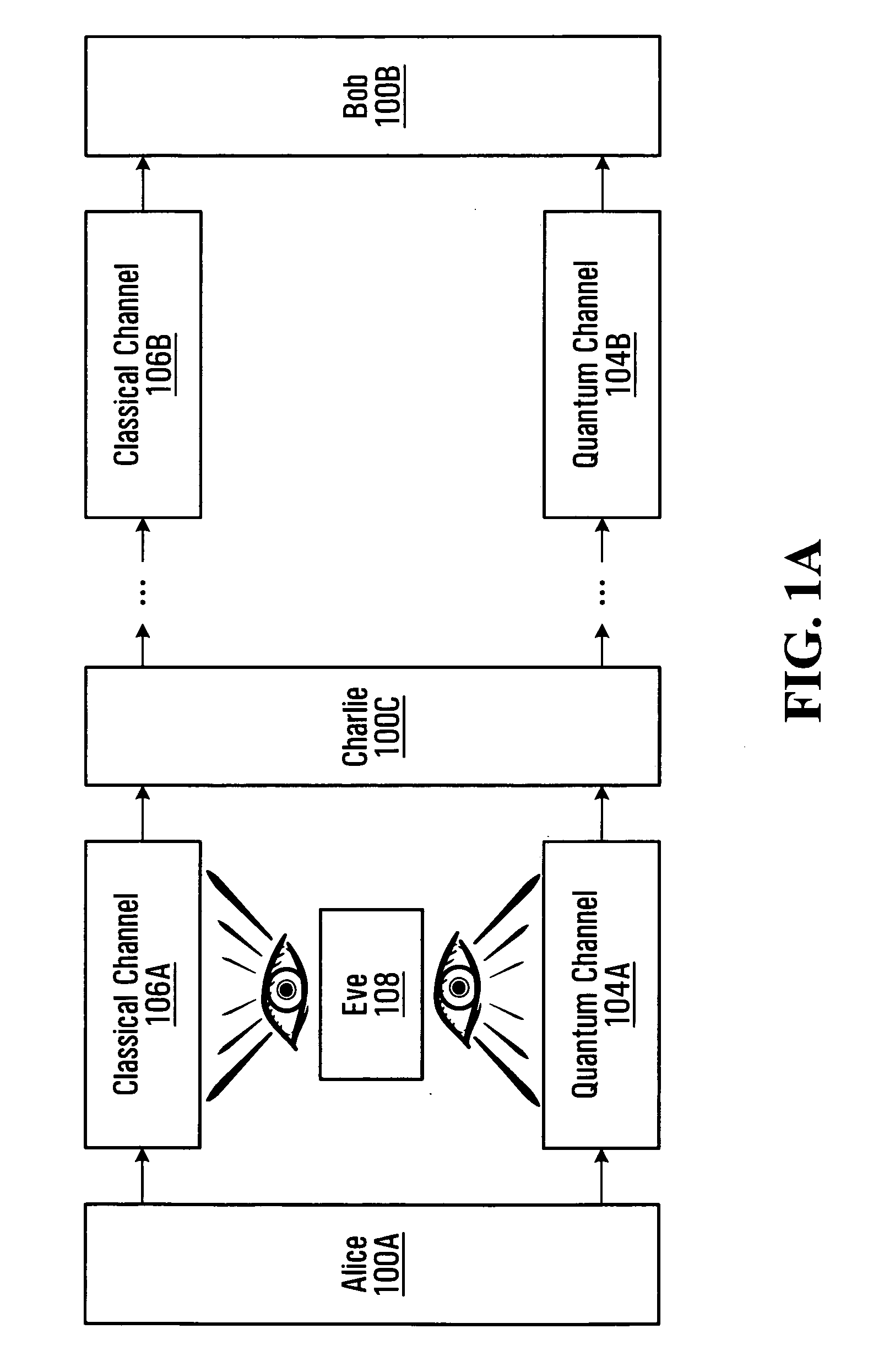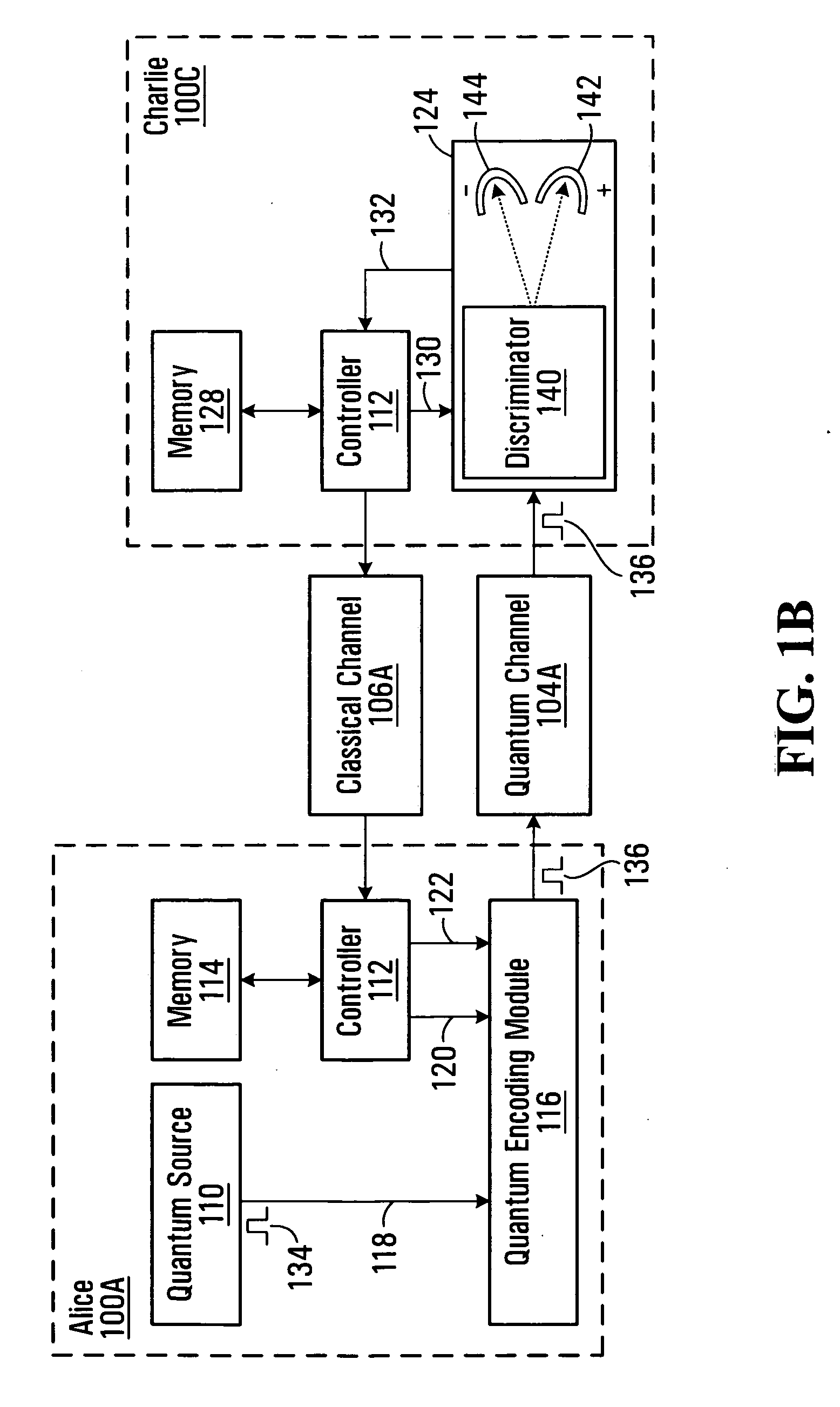Methods and systems for communicating over a quantum channel
a quantum channel and communication method technology, applied in the field of communication, can solve the problems of becoming so severe attenuated, undetectable by bob's receiver, and increasing the loss
- Summary
- Abstract
- Description
- Claims
- Application Information
AI Technical Summary
Benefits of technology
Problems solved by technology
Method used
Image
Examples
Embodiment Construction
Overall System
[0027] With reference to FIG. 1A, there is shown a first node (hereinafter referred to as Alice 100A) and a second node (hereinafter referred to as Bob 100B) that participate in a cryptographic key distribution process. Located between Alice 100A and Bob 100B are one or more intermediate nodes, only one of which is illustrated and referred to as Charlie 100C. It should be understood that any number of intermediate nodes, such as Charlie 100C, may be present between Alice 100A and Bob 100B. In fact, the present invention has beneficial application even in the absence of any intermediate nodes between Alice 100A and Bob 100B. In such a scenario, references to Charlie 100C in the below description may be replaced by references to Bob 100B.
[0028] Adjacent pairs of nodes communicate over a quantum channel and a classical channel. For example, in the illustrated embodiment, Alice 100A and Charlie 100C communicate over a quantum channel 104A and a classical channel 106A, w...
PUM
 Login to View More
Login to View More Abstract
Description
Claims
Application Information
 Login to View More
Login to View More - R&D
- Intellectual Property
- Life Sciences
- Materials
- Tech Scout
- Unparalleled Data Quality
- Higher Quality Content
- 60% Fewer Hallucinations
Browse by: Latest US Patents, China's latest patents, Technical Efficacy Thesaurus, Application Domain, Technology Topic, Popular Technical Reports.
© 2025 PatSnap. All rights reserved.Legal|Privacy policy|Modern Slavery Act Transparency Statement|Sitemap|About US| Contact US: help@patsnap.com



